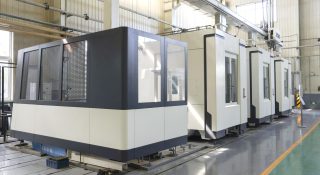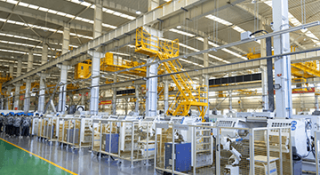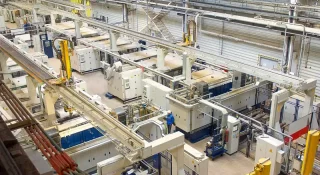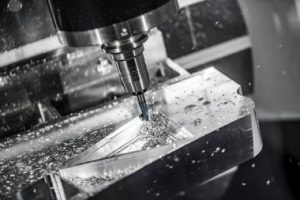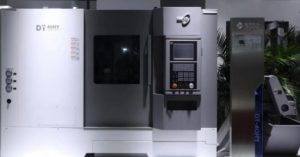CNC milling plays an extremely important role in today’s manufacturing industry due to its precision, stability, and ability for mass production. This article will provide a detailed introduction to the definition, processes involved, as well as some considerations for purchasing CNC milling machines.
What is CNC Milling?
CNC milling is a precision machining process where computer programming controls the tools to accurately mill workpieces. Its key distinction from traditional milling lies in the method of control. Using computer coding, processing parameters and milling paths can be translated into instructions that the machine tool can recognize and execute, automating the machining process. This significantly enhances precision, efficiency, and automation.
Milling Definition
Milling is a method of machining surfaces of objects using rotating multi-edge cutting tools, it is a “subtractive” manufacturing process where material is removed to achieve the desired shape and size. Milling is typically performed on a milling machine or a boring machine, where the workpiece is usually moved along an axis while the cutting tool rotates to remove material. Alternatively, the workpiece can be fixed while the tool concurrently rotates and moves. Today, advanced CNC milling machines can have more than 5 axes, allowing for the production of highly complex shapes using a single machine.
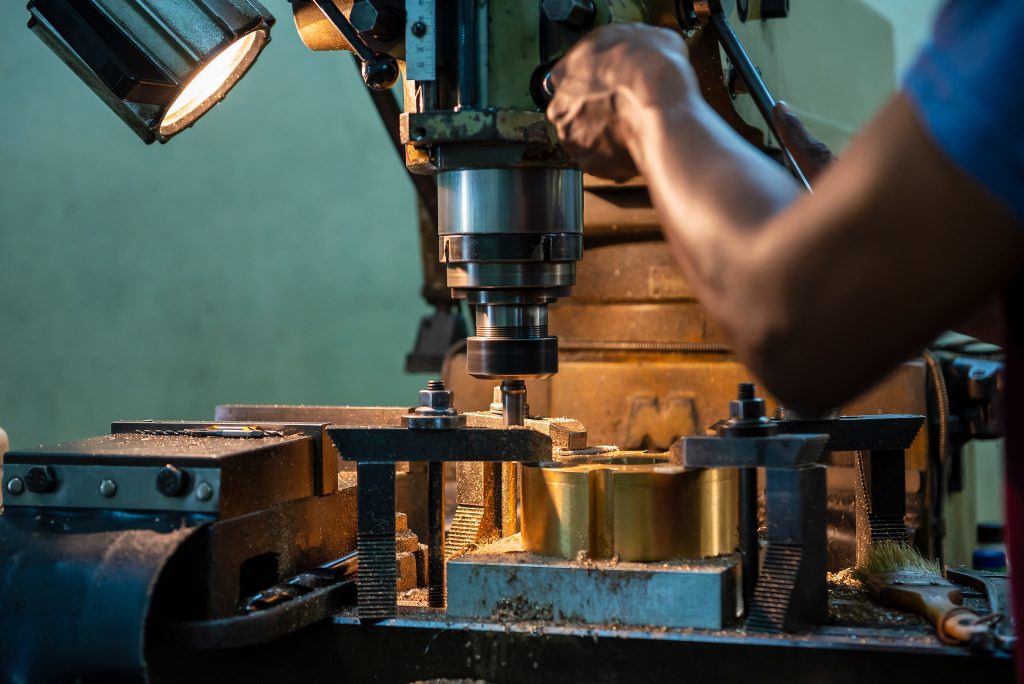
CNC Milling History
Computer Numerical Control (CNC) milling was developed by MIT and NASA in the 1950s. Back then, engineers were extensively exploring the application of computer technology in industry. This technology was initially used in the military domain. By the 1960s, CNC milling had rapidly proliferated across various industrial sectors. As computer technology evolved, CNC milling became increasingly prevalent and practical. Today, it has become an indispensable part of modern manufacturing.
CNC Milling VS CNC Turning
Milling and turning are the two most commonly used machining methods. They may seem quite similar because they both involve removing metal (or other materials) for processing. The difference lies in the machining principle. In turning, the workpiece rotates while the tool remains stationary. As the workpiece is fixed on a rotating spindle, the tool moves to remove excess material. Therefore, turning results in a final shape with some form of rotational contour, such as a spherical or cylindrical shape. On the other hand, in milling, we use a rotating tool to process a fixed workpiece, allowing for a variety of shapes to be achieved.
CNC Milling VS 3D Printing
3D printing is an “additive” manufacturing process where models are broken down into multiple layers and points, which are then built up layer by layer/point by point. You can think of it as building with blocks. The manufacturing process of 3D printing is completely opposite to that of CNC milling. On the other hand, 3D printing is a relatively new technology and currently cannot be compared to CNC milling in terms of manufacturing capability, efficiency, and cost-effectiveness.
Why We Need CNC Milling?
CNC milling enables the machining of various complex three-dimensional shapes, including various planes, grooves, gears, and surfaces. In the fields of mold manufacturing and automotive production, CNC milling is indispensable. The aerospace industry also relies on CNC milling to achieve the complex shapes and high precision required in its production processes.
Advantages of CNC Milling
- Precise control reduces material consumption
- Decreases the need for labor
- Increases efficiency
- High-precision processing
- Enables mass production without sacrificing quality
CNC Milling Methods
End Milling
End milling, also known as face milling, is one of the most common milling operations. In this type of machining, the tool’s rotational axis is perpendicular to the workpiece surface, and we use the cutting edge of the milling cutter to cut the material, shaping it into a flat surface.
Plain Milling
Plain milling, also known as slab milling, is another common milling operation. In this type of machining, the tool’s rotational axis is parallel to the workpiece surface, and the cutting to shape the plane is distributed across the cylindrical surface of the tool. Plain milling is typically carried out on a horizontal milling machine.
Chamfer Milling
Chamfer milling, also known as angular milling, refers to the milling process where the tool forms a 45-degree angle or other specific angles with the workpiece surface. This method is suitable for cutting the edges or creating chamfers on the workpiece. It often requires the use of special milling cutters to create complex geometric shapes.
Profile Milling
Profile milling, also known as form milling, involves the use of specially designed tools that move along the workpiece surface to create specific contours or shapes. This method is commonly used in the manufacturing of complex parts and molds.
Other CNC Milling Operations
Other common milling operations include:
Slot milling: Using a tool narrower than the workpiece to create slots on the workpiece.
Combined milling: Simultaneously using multiple tools to mill the workpiece, typically employed when processing large workpieces or to improve efficiency.
Additionally, because milling machines can accommodate other tools, operations such as drilling and boring are also available options.
CNC Milling Process
Breaking down the intricate milling process into individual steps helps us quickly grasp this skill. Below are the core steps of CNC milling:
Step-by-step procedure of CNC Milling
- Step 1: Design and Programming
First, you need to design the product’s CAD model and then convert it into a program that the CAM system of the machine tool can understand and execute.
- Step 2: Preparation
Before actual machining, you’ll need to prepare the worktable, fixtures, workpiece, and select and install the appropriate cutting tools.
- Step 3: Setting Parameters
Depending on the material and machining requirements, you’ll need to set parameters such as tool speed, feed rate, cutting depth, and other process parameters.
- Step 4: Commence Milling
Initiate the program and let the CNC milling machine turn your concept into reality. Make sure to monitor the operation and take proper safety precautions throughout.
CNC programming and G-codes
Programming is a crucial part of CNC machining, and it is typically carried out by skilled programmers or operators. G-code is an industrial standard programming language consisting of a series of commands. Programmers use G-code to instruct CNC machine tools on how to control the movement of the tools, at what speed to cut, or what operations to perform. Writing G-code programs based on CAD drawings is an essential preparatory step for CNC milling.
Best Practices for CNC Milling
Quality Control and Inspection in CNC Milling
To ensure that CNC milling benefits your business, quality control and inspections are essential. Here are some suggestions:
- First-piece inspection. Before mass production, it is crucial to inspect a new part or product.
- Machine calibration. Regularly calibrating the machine tools helps maintain accuracy and machining quality.
- Real-time monitoring. Utilize sensors to monitor the machining process in real time and make timely adjustments when errors occur.
- Sampling checks. Sampling checks are a common quality control measure.
- Record-keeping. Documenting machining parameters and machine operation logs helps trace the causes of quality issues.
- Train operators. Ensure that your operators are proficient in operating the machine tools.
Safety and Maintenance in CNC Milling
In machining operations, strict safety practices are essential. In addition, regular maintenance ensures that the machine tools operate in a safe and reliable manner, extending their lifespan. Here are the steps you need to take:
- Train and educate operators. Provide thorough training for operators to ensure they understand safety protocols and emergency procedures.
- Wear safety gear, including safety glasses, gloves, and work attire.
- Perform regular maintenance on the machine tools. This includes regular lubrication and cleaning, inspection of the electrical systems, and timely replacement of damaged parts.
- Inspect cutting tools. Ensure proper installation and securing of cutting tools, and regularly inspect and replace worn tools.
- Ensure that safety switches and emergency stop devices are in proper working order.
CNC Milling Machine Considerations
CNC Milling Machine Types
Typically, we can classify CNC milling machines based on the orientation of the spindle as either vertical or horizontal:
- Vertical Milling Machine: The spindle of a vertical milling machine is perpendicular to the worktable. This type of machine is suitable for machining lighter and thinner workpieces.
- Horizontal Milling Machine: The spindle of a horizontal milling machine is parallel to the worktable. It is suitable for machining heavier and larger workpieces.
Additionally, we can classify milling machines based on the number of axes:
- 3-axis CNC milling machine: This is the most common type where the tool can move along the X, Y, and Z axes, allowing it to machine flat surfaces or make vertical cuts at any point on a plane.
- 4-axis CNC milling machine: In addition to the X, Y, and Z axes, it includes a rotational axis, typically rotating around the X-axis.
- 5-axis CNC milling machine: Building upon the 4-axis model, a fifth rotational axis is added, rotating around the Y-axis or Z-axis. This type of CNC milling machine is currently the most powerful machining device available.
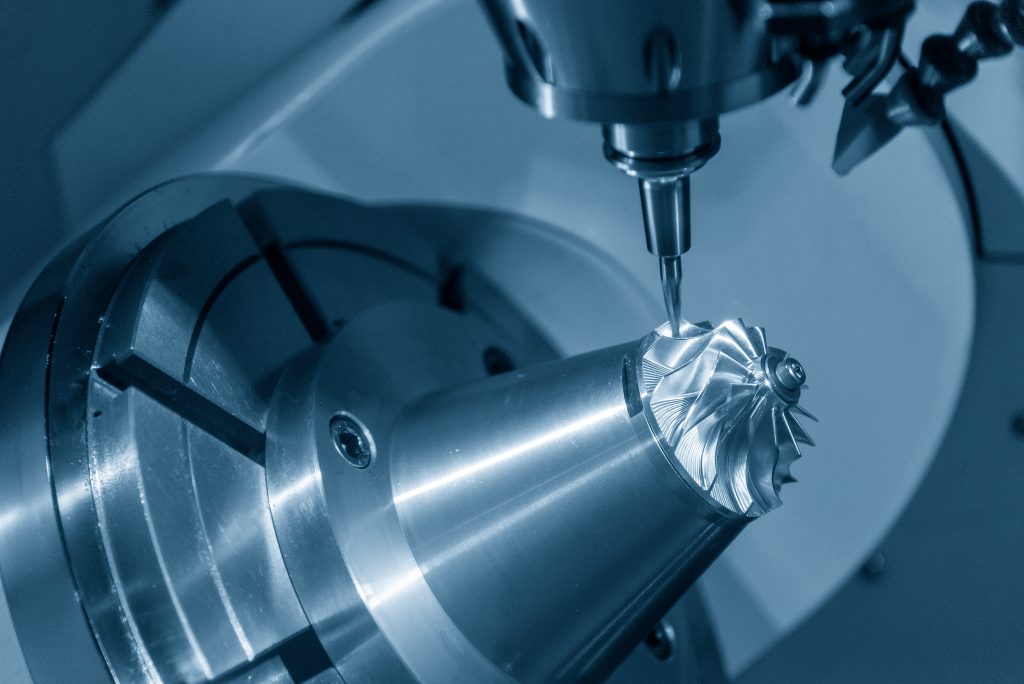
CNC Milling Machine Components
Although there are various types of CNC milling machines, their main components are generally consistent, including:
- Column: Provides support for all other components. The machine’s base is also included. Oil and coolant tanks are also installed within it.
- Knee: The worktable and tool holder are mounted on the knee, supported by the column and capable of moving up and down.
- Spindle: A rotational device used to hold cutting tools. It can be vertical or horizontal depending on the type of milling machine. It is controlled by a motor for rotation.
- Control panel: Includes a monitoring interface and buttons for inputting programming commands. It acts as the machine’s brain.
- Worktable: Where the workpiece and fixtures are secured. It can move in horizontal or vertical directions.
- Automatic Tool Changer (ATC): Its role is to quickly change tools during the milling process. This significantly improves production efficiency.
CNC Milling Material and Tools
CNC milling technology can process various materials, including aluminum alloys, steel, cast iron, plastics, composite materials, and more. However, it’s important to note that different materials determine the type of machine tools selected and the required parameter settings to achieve the cutting effect.
Additionally, to achieve the best machining results, choosing the right cutting tools is necessary:
- Aluminum Alloys: As aluminum alloys are typically lightweight materials, high-speed steel tools or carbide tools can meet the requirements.
- Steel: Steel is harder and typically requires carbide tools with enhanced wear resistance and heat resistance or coated tools.
- Plastics: Plastics are sensitive to heat, so they require high-speed steel tools with good heat dissipation properties or straight flute end mills.
- Composite Materials: Composite materials require tools that reduce vibration and prevent breakage, such as multi-edge cutting tools.
6 Best CNC Mill Brands
The demand for CNC milling machines varies from person to person and is influenced by specific machining needs and budget considerations. Here are some widely recognized CNC milling machine brands that I recommend:
- Haas: Haas is a well-known American manufacturer of CNC machine tools and is one of the largest machine tool builders globally.
- Mazak: Coming from Japan, Mazak is similarly one of the world’s most renowned and largest CNC machine tool manufacturers.
- DMG Mori: Formed by the merger of Japan’s Mori Seiki and Germany’s DMG, it is a leading global manufacturer of CNC machine tools.
- Okuma: A well-known Japanese manufacturer of CNC machine tools with a long history and a diverse product line.
- Hurco: A reputable American industrial technology company that produces a variety of machining centers and CNC machine tools.
- Doosan: Formerly known as Daewoo in South Korea, its CNC machine tool products enjoy high recognition and market share worldwide.
How to Choose CNC Milling Service?
Choosing the right CNC milling service provider depends on several factors. Here are some tips:
- Make sure the provider has advanced equipment and reliable technical capabilities.
- Understand the provider’s quality management process.
- Agree on delivery schedules and breach of contract responsibilities.
- Strike a balance between cost and quality.
- Ensure the provider offers customized machining solutions.
CNC Milling Cost
The cost of CNC milling is influenced by several factors.
- First, there’s equipment cost: CNC milling machines can carry out more complex operations, leading to higher operation and maintenance costs, making them generally more expensive than other machine tools.
- Next is tooling cost: This is determined by different materials. Generally, carbide tools are harder, more heat-resistant, and suitable for high-speed rotation, hence they are more expensive.
- Material of the product: This is one of the most crucial cost factors. Metal materials are generally more expensive and materials that are harder to process will also consume more resources.
- Quantity: Due to the nature of batch production, the more products made, the lower the cost.
CNC Milling Alternatives
While CNC milling offers numerous advantages compared to other machining methods, it is not suitable for all machining needs, whether due to technical reasons or cost considerations. For instance, when producing simpler parts with lower precision requirements, one can opt for more traditional machining processes like drilling or turning, or handle the cost by manual milling. When producing parts with higher and more complex demands, other processes such as electrical discharge machining, chemical machining, laser cutting, and 3D printing can also be considered.
Future Trends in CNC Milling
With the advancement of CNC machining technology and industry progress, there is no doubt that CNC milling will become increasingly smarter in the future. Here are some viewpoints on the trends of CNC milling:
- Increased automation: With the help of artificial intelligence and industrial big data technology, CNC milling will become more automated, capable of processing even more complex parts.
- Personnel training: Through the use of virtual reality technology, the training of operators will become safer and more efficient.
- Enhanced machining capabilities: As materials science progresses, we will have more powerful cutting tools, leading to further improvements in the quality and precision of part surfaces.
- Sustainability: More environmentally friendly machining technologies and materials will be developed.
Conclusion
This article provides a brief introduction to the process principles of CNC milling, basic information about CNC milling machines, and some advice for selecting a CNC milling service provider. For more information, please visit our homepage or blog.
FAQ
What is the difference between CNC Milling Machine and VMC Machine?
The main difference between CNC milling machines and VMC lies in whether they are equipped with an automatic tool changer (ATC). With an ATC, VMCs can complete multiple machining processes in one setup.
What is the difference between a CNC Milling Machine and a CNC Router?
A CNC router is typically used to cut soft materials such as wood or foam. However, its speed and precision are lower compared to a CNC milling machine.
Where can I get training in CNC Milling skills?
You can pursue systematic training in CNC milling at vocational/technical schools or training centers, including CNC programming, machine operation, and maintenance. Moreover, numerous online education platforms offer related courses. Some employers also provide training opportunities for their employees. In more traditional areas, you can gain CNC milling skills through apprenticeship programs.


